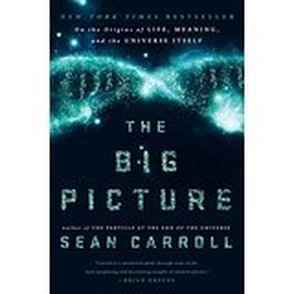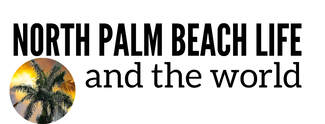 The scientists of yesteryear would no doubt marvel at how some of their modern day counterparts have reached celebrity, rock star status. More or less starting with the pioneering efforts of astronomer Carl Sagan on PBS, theoretical physics has gone media mainstream, showcasing the work of Michio Kaku, Stephen Hawking, Brian Cox, Brian Greene and Neil deGrasse Tyson. Shows like "Through the Wormhole" with Morgan Freeman throw a bigger spotlight on ideas like the multiverse, string theory and quantum mechanic "spookiness," borrowing from Mr. Einstein. Another name to add to that distinguished mix -- Sean Carroll, a theoretical physicist at Caltech. Carroll's new book is "The Big Picture: On the Origins of Life, Meaning and the Universe Itself." A fairly ambitious undertaking, and all in less than 500 pages. While not exactly light summer reading, Carroll tackles the topic in (mostly) plain English without skimping on the research. Divided into six parts, he draws heavily of course on physics, both classical and quantum, but is also at home in the worlds of biology, philosophy, religion and history. Building a case for theism vs. naturalism, he proceeds like a skilled lawyer, on behalf of both parties, weaving together what we know about the universe and how it functions. Be prepared to dive into all the "hard" questions, including the arrow of time, the Big Bang, how did life begin and the biggest head-scratcher of them all, consciousness. (To quote the 1956 movie, "Invasion of the Body Snatchers": "The mind is a strange and wonderful thing. I'm not sure it will ever be able to figure itself out. Everything else maybe, from the atom to the universe. Everything except itself." Carroll's main theme is everything in our universe (which is probably just one of many) has emerged from the same basic recipe of subatomic particles and forces, including all living things. As the universe moved from order (low entropy) at the moment of the Big Bang to its current state of disorder (high entropy), we are one of the results. Probably not really a spoiler alert, but Carroll comes down on the side of naturalism. Poetic naturalism, to be precise. And it's a hard point to argue. Along the way, Carroll interjects examples from his life, including his relationship to his grandmother, as well as his love of strawberry syrup and rock music. It adds a human touch that's much appreciated as we gaze into the depths of the rabbit hole. Carroll's view is that given what we know, it's highly probably this life is the only life we have, and we would be wise not to waste our allotment of 3 billion heartbeats (the human average over a lifetime). While some would find it depressing (the self-realization everything ends), I found his message oddly uplifting and comforting. For a science book, it's amazingly readable, and relatable. Do we still have questions about what "the big picture" is all about? More than ever. But it's life's unsolved mysteries that drive us forward. No doubt Carroll's next collection of particles and forces that make up those written pages will take us farther down the road to enlightenment. But all the science, research and learning aside, I have a hunch that Carroll would ultimately side with The Beatles: "All you need is love." Find "The Big Picture" here on Amazon. Comments are closed.
|
AboutYes, I know it's spelled like "Jerry." No, I don't know why it's pronounced "Gary." Archives
May 2024
Categories |
- Home
- Cruise/Travel
- Gigi in the 561
- Blogs
- Video
-
Explore
- Snaps >
- Island Destinations
- October Odyssey >
- Pam - Traveling in Style
-
Road Trip!
>
- Road Trip! -- Tucumcari, New Mexico
- Road Trip! -- The Painted Desert
- Road Trip! - Sedona, Arizona
- Road Trip! - Sedona Wineries
- Road Trip! Tonto Natural Bridge State Park
- Road Trip! - Mogollon Rim
- Road Trip! - Verde Canyon Railroad
- Road Trip! - Jerome, Arizona
- Road Trip! - California
- Road Trip! - Palm Springs Celebrity Tour
- Road Trip! - Palm Springs Aerial Tramway
- Road Trip! - Festival in Palm Springs
- Road Trip! - Willcox, Arizona and Apple Annie's Orchard
- Road Trip! Willcox Wineries
- Road Trip! Chiricahua National Monument
- Road Trip! Tombstone, Arizona
- Tombstone, Part Two
- Road Trip! - Epilogue
-
Traveling With Joe
>
- Beartooth Highway
- North Cascades National Park
- A Visit to the Philippines
- Grand Canyon National Park
- Glacier National Park
- Yellowstone National Park
- Hiking in Bear Country
- Crater Lake National Park
- Albuquerque Balloon Fiesta
- The Kerrville Folk Festival
- Building Hope in the Rio Grande Valley
- Yellowstone Camping Tales
-
Unknown Yellowstone
>
- Unknown Yellowstone - Heart Lake
- Unknown Yellowstone - Summit Lake
- Unknown Yellowstone - Shoshone Lake
- Unknown Yellowstone - Grizzly Lake
- Unknown Yellowstone - Riddle Lake
- Unknown Yellowstone - Pelican Cone
- Unknown Yellowstone - Mt. Washburn
- Unknown Yellowstone - Specimen Ridge
- Unknown Yellowstone - Avalanche Peak
- Unknown Yellowstone - Divide Creek
- Contact
- Search
|
© COPYRIGHT 2024 ALL RIGHTS RESERVED.
|

 RSS Feed
RSS Feed
